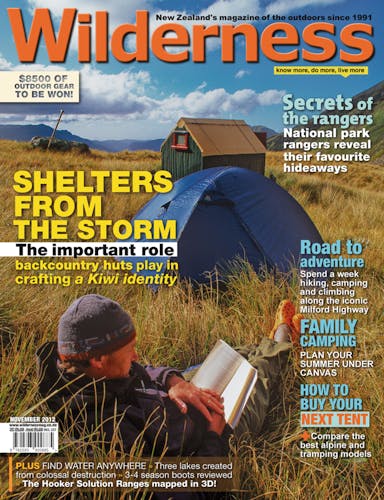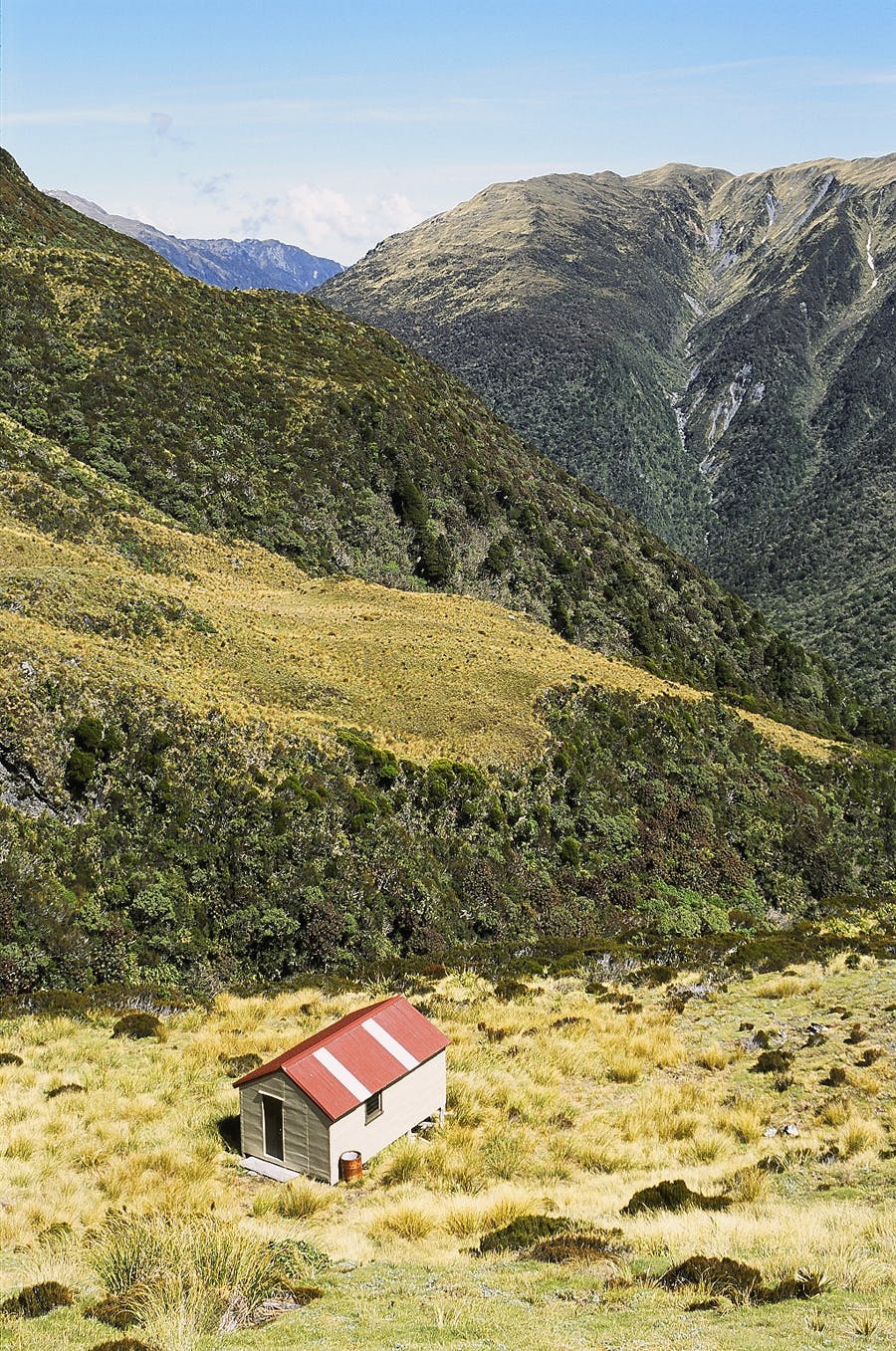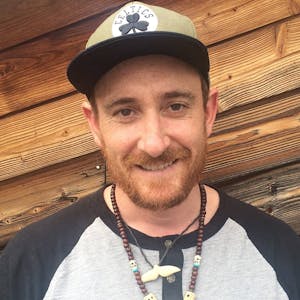Disappointed with the state of a track or a hut? Instead of complaining about it, a group of West Coasters have decided to take action and pick up where DOC left off.
In the Ruahine Range a threatened species sits silently as wind and rain wears it down to the bone.
There’s only 60 left in the range and DOC caused public outrage when it announced it wanted to kill off half.
The community succeeded in talking the department out of the brazen act, but Palmerston North Tramping and Mountaineering Club (PTMC) president Anne Lawrence says the species is still “very threatened at the moment”.
Remote huts are not a living-breathing threatened species like kokako or kaka and they no longer play a crucial role in pest control, but to many people around the country they’re an important part of New Zealand’s outdoor heritage and, in their view, also deserve protection.
Like New Zealand’s oddball native birds, remote backcountry huts and bivs are a unique and slightly eccentric feature of the wilderness and one that isn’t seen to such an extent anywhere else in the world.
This is why outdoor groups that regularly visit the remote huts in the Ruahine Range put up a fight when DOC announced it wanted to remove half of the huts in the two forest parks that make up the range.
Along with the PTMC, local branches of the New Zealand Deerstalkers Association, as well as the Tramping Clubs of Napier, Wanganui, Rangitikei, Heretaunga and Manawatu all sat down with DOC to work out another solution.
On behalf of the group, Lawrence has also been talking to Remote Huts website and Permolat group founder Andrew Buglass about setting up a similar website and group to promote and protect the remote huts in the Ruahines.
“One of the issues around the Ruahine huts, and it’s the same on the West Coast, is they don’t have high usage and DOC’s view is because of that it’s pointless putting money into them,” Lawrence says. “But my club’s argument is the opposite; the fact they’re remote and not highly used is what makes them precious.
“The heritage of our huts is unique to this country and it feels very threatened at the moment.
“I rang Andrew because those of us concerned thought it would be good if we had something similar to Permolat for the Ruahines as a way of ensuring our community has better knowledge and input into what’s happening with our huts.”
As a result of talks with DOC, the PTMC now has a community agreement to maintain Ngamoko and Mid-Pohangina huts and a third agreement to co-manage Rangiwahia Hut with DOC.
Other outdoor groups are also signing agreements to take over maintenance of huts in the range.
For Permolat’s Andrew Buglass, this is the do-it-yourself spirit he’d like to see more of.
Buglass, 55, was born and raised on the West Coast and is big on self-reliance. When he’s not out in the hills of the West Coast, where he has been tramping since he was a kid, he works as a counsellor in Christchurch.
Perhaps unsurprising for a Coaster, he’s not the type of counsellor who asks everyone he sits down with how they’re feeling.
“That just makes people want to throw-up,” he says. “People want something [more] real than that.”
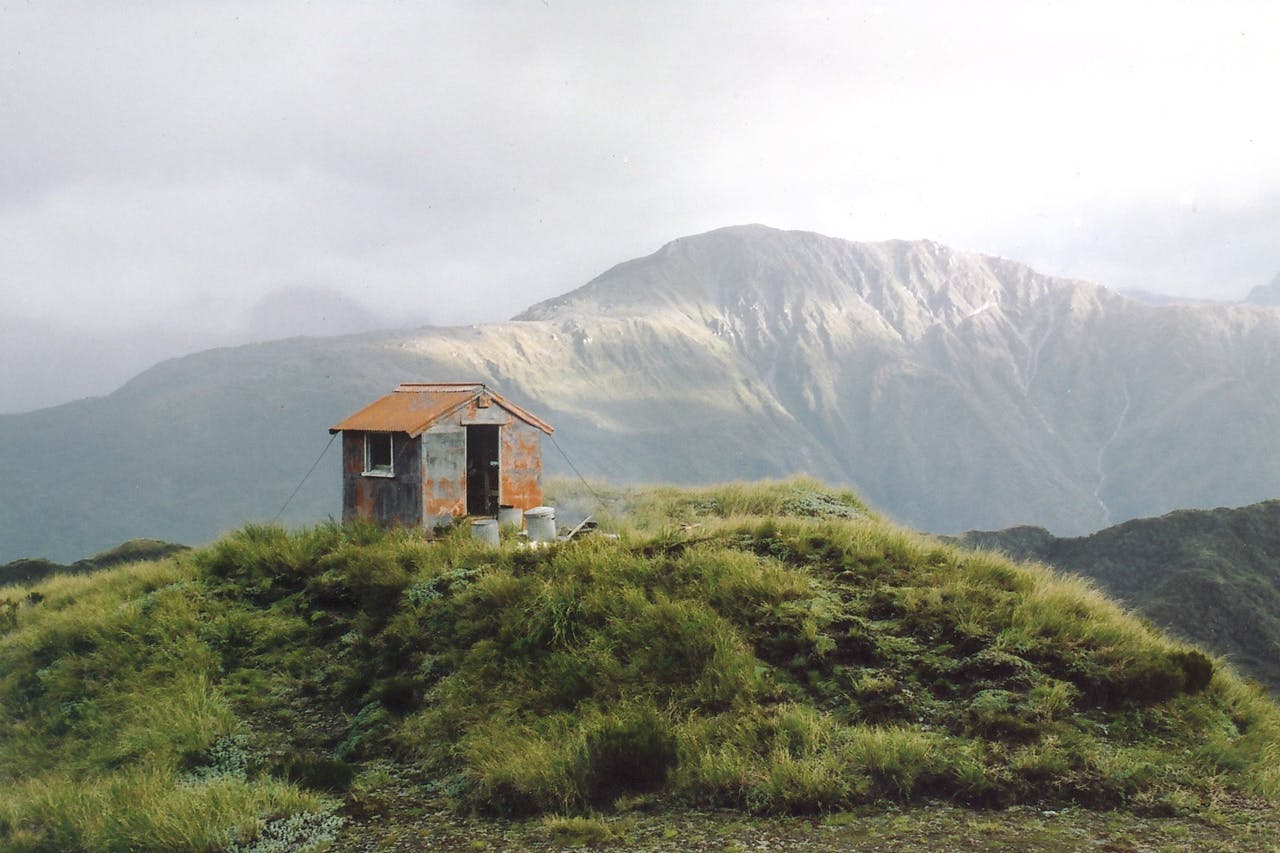
Top Olderog Biv. Photo: Andrew Buglass
Also common for Coasters, Buglass is not one to tolerate whinging and moaning. He’s all about taking action, and this is the attitude he believes more backcountry trampers should have towards huts and tracks.
In the 1970s, the government gave the New Zealand Forest Service (NZFS) and Lands and Survey an ‘open cheque book’ to build huts and tracks and while this has left Kiwis a matchless recreation asset, Buglass also believes it’s had a downside.
“It’s partially to blame for creating this passive culture where we’re used to having all of this and expect it to keep going,” he says.
Buglass believes Kiwis have been spoiled and now a self-entitled belief that DOC should maintain all the huts and cut all the tracks prevents us from getting on and doing it ourselves.
“When people saw the track wasn’t being cut they’d moan in the hut book,” Buglass says. “They expected if they moaned loud enough, someone would come along and cut the track.
“But some of us could see that it wasn’t going to happen so we said we’d just cut the track ourselves.
“If you’re worried about the track, why don’t you do something?
“That’s the kind of thing Permolat has tried to get going.”
Buglass had the idea for Permolat in 2003 while taking a stroll on Christchurch’s Brighton Beach.
For a few years before he’d been watching some of the West Coast’s remote huts deteriorate. He noticed a few huts were being maintained by users and decided to adopt a couple of huts himself.
However, he knew it would take much more than that to solve the wider problem.
At the time, tracks were becoming overgrown which discouraged visiting the West Coast’s remote huts. Ultimately, low hut usage rates provided grounds for DOC’s “bean counters” to argue for their removal or to cease maintainance.
“I was aware this was a resource that was going to get lost if nothing happened, but I didn’t quite know how to stop it as one person,” he says. “I kept coming across the same names in the hut books of really remote huts, but I knew the chance of running into them was almost zero.”
But Buglass came up with a way to draw them out and to profile the huts to encourage people to visit them.
He created a website and a forum called Permolat on onlingroups.net.
“I thought it might drag out some of these names I saw in hut books and create a small network of hut users,” Buglass says.
It did that alright, bringing a diverse and widely dispersed group together on line.
The Remote Huts website profiles (currently) 61 huts and the online group Permolat connects people with a passion for remote huts, allowing them to organise work, projects and lobbying efforts.
“Together it works very well as a change agent and strikes a chord in the Kiwi psyche,” Buglass says.
Permolat now has about 140 members of whom there’s a core group of about 20 or 30 who cut tracks and maintain huts. Other members offer other forms of support such as money or information.
The group – from ‘rednecks to greenies’ – is probably best known for supplying up-to-date route information on remote huts and tracks. They all have one thing in common; a deep need for solitude in the wilderness.
Buglass is quick to acknowledge the group’s “inherent contradiction”; it wishes to promote remote huts on the West Coast so they get more use, but, generally its members don’t want anyone and everyone using them.
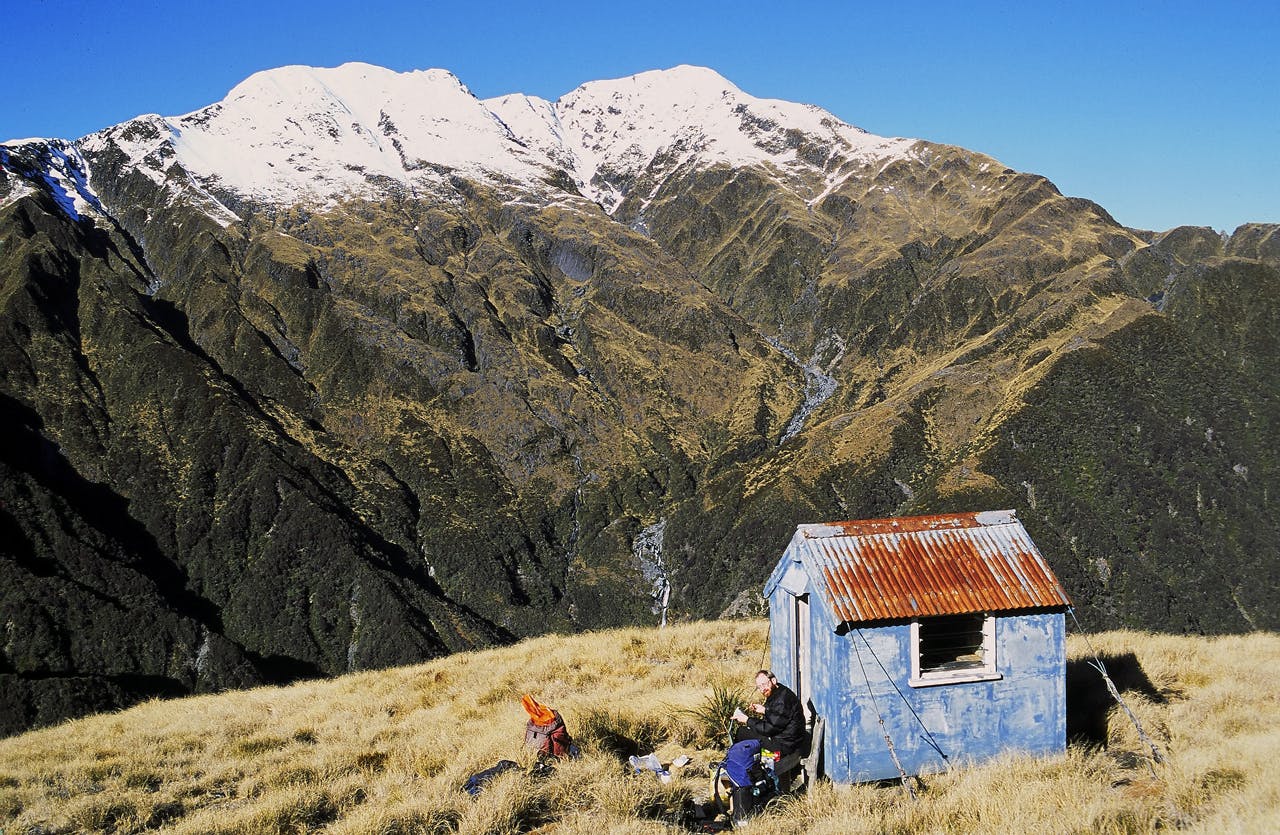
Gerhardt Spur Biv. Photo: Simon Lewis
“I do want to share them, but not with everybody,” Buglass explains. “If they’ve taken the trouble and have the experience and skills to get into those remote places, they’re probably going to be reasonably good company anyway.
“They’re not going to be your road-end hoons or your dorky backpackers who’ve just skidded off Ball Pass in their sand shoes.”
Buglass realises how this sounds and admits a few members of Permolat, including himself, “are very socially challenged”.
His high school friend and active Permolat member, Glenn Johnston, perhaps says it best: “Generally, we don’t mind more people if they’re our sort of people.”
Buglass is pleased the Ruahine groups are keen on replicating Permolat and hopes other groups around the country also find a way to protect and preserve remote huts.
He points out before NZFS started building huts and bivs in the backcountry, tramping clubs built many huts. Buglass believes trampers need to come together again and pitch in rather than throw stones at DOC.
You might expect plenty of DOC bashing on the Permolat forum boards. Coasters are known for their feistiness – Dominion Breweries learned that the hard way when it closed Monteith’s brewery in Greymouth. Public outcry forced it to reopen.
But, Buglass and other Permolat members are pragmatic about DOC’s economic situation, its abysmal lack of funding, and few harsh words about DOC appear in the discussion forums.
That’s not to say, however, that members approve of DOC’s emphasis on the front country. Many see it as unnecessary expenditure on tourism, rather than focusing on conservation and recreation, priorities of the Conservation Act.
“At a local level in some conservancies and on the West Coast, DOC is really brilliant – it’s on our side, it’s on board,” Buglass says. “Higher up, it’s the planners and bean counters I’m probably not so warm towards. I think they’re just not connected with what’s happening at the grass roots level.”
DOC Hokitika’s community relations and programme manager Ted Brennan, however, is doing everything he can to support Permolat at the grassroots level.
He’s been a keen tramper since high school and as a Permolat member has been out in the hills cutting back overgrowth.
He believes remote huts are part of the country’s heritage and should be protected.
“On a personal level I’m very passionate about the local backcountry and the extensive infrastructure we have here to support access through it,” Brennan says. “I also have a partner and a young family, keen and capable trampers, who enjoy visiting these huts.
“As a family we’ve committed to helping others who are currently considering a management agreement for a hut and to a local initiative to repaint another hut.”
Wearing his DOC hat, the most significant way Brennan has supported Permolat is by involving it in local decision making regarding huts, tracks and other infrastructure such as bridges. In return, Permolat keeps Brennan informed about issues or problems with huts and tracks.
The two parties have also come to an informal agreement; DOC will, as best as it can, maintain the huts and Permolat members will do their best to cut the tracks. In fact re-cutting tracks has become the major work the group does.
By ensuring the tracks are open Buglass hopes more people will visit remote huts, making it harder for DOC to justify removing them.
“Through the combination of up-to-date route information on the Remote Huts website, the track maintenance efforts by Permolat and DOC’s network of maintained huts and tracks, visitation and hut use locally does appear to be increasing,” Brennan says. “It’s no surprise many of those I’ve spoken to checked out Andrew’s website before their visit.”
Brennan expects more community groups will take up the mantle and form partnerships with DOC.
“I think in New Zealand the community is certainly capable of maintaining a number of huts and this is becoming quite evident throughout the country, but I anticipate there would be a saturation point somewhere and, ultimately, things like cost, desire and capability would become deciding factors,” Brennan says. “More importantly for the future is a more collaborative approach between groups like Permolat and the department and this is something I’m keen to further develop locally.”
Buglass also believes better collaboration and coordination with DOC is the way to go, but says for it to work well the department needs to relax some of its stipulations.
“If it wants us to get involved, it can’t then say we’ve got to do it DOC’s way and have huts with double glazed windows and piles that are one metre deep,” Buglass says.
“The focus here could be shifting from recreation to historical huts; anything that means we can just keep them the way they are and so we’re not crippled by having to meet modern day standards.
“I think most Kiwis are happy with basic huts, in fact they probably prefer them.”
PTMC president Anne Lawrence talked to her local DOC office about this and said her feeling was DOC is also frustrated by the prohibitive building and health and safety codes governing backcountry huts.
She said there seems to be little wriggle room.
If push comes to shove, and DOC doesn’t play nice, Buglass is prepared to go feral.
He says New Zealanders have become too passive and allow the government to get away with too much whereas there would be riots in the streets in other countries if their governments tried to push through what they’re trying here. Instead, Kiwis whinge and take it quietly, Buglass says.
But not on the West Coast.
“If DOC’s not going to do stuff and we just go in and do it anyway, who’s going to stop us?” Buglass says. “What are they going to do if they remove a hut and we just put it back in?
“We’re a go out and do it group; we didn’t ask anybody.
“A lot of people aren’t comfortable with our model, it’s a bit too unruly and anarchistic, but that’s what makes it work.”
For the sake of New Zealand’s remote huts, a threatened and slightly eccentric species, let’s hope it works elsewhere too.





